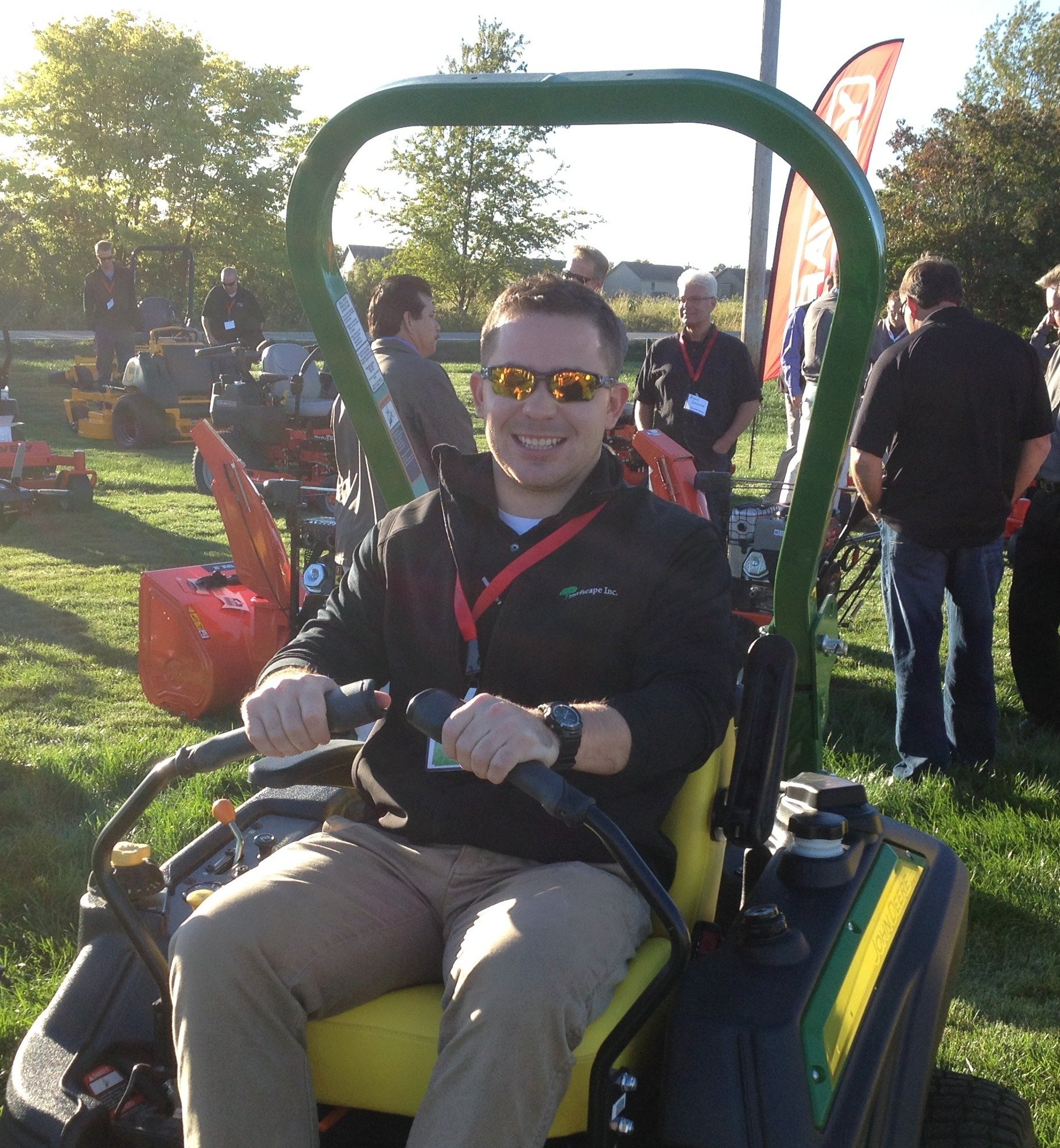You want a lawn at your Northeast Ohio commercial property that frames your office park, industrial facility, hospital, school, or HOA perfectly. You want it to add that touch of green to your space that welcomes employees, visitors, and others in with a lush, green stand.
What you don’t want is a lawn that is yellowing and being slowly eaten to death by insects. It doesn’t give the best first impression to your potential or current customers, residents, or guests. And it certainly doesn’t leave a lasting one.
In lawns, bugs can be quite sneaky. They are usually so small that they are feasting on your grass and you don’t even know it until you see the damage, and sometimes by then it can be harder to control them because they are bigger and stronger from dining on your grass.
Some lawn insects eat your grass roots like grubs, while others like to suck the moisture right out of your grass blades. Those are chinch bugs or billbugs, and in large numbers they can be quite destructive.
How can you destroy these pests and get your nice commercial lawn back? Let’s discuss lawn insects and surface insect control so you can get a better handle on managing these pests at your Northeast Ohio commercial facility.
A Closer Look at Chinch Bugs and Billbugs In Your Lawn
Chinch bugs and billbugs are two of the most common surface lawn insects that can impact your commercial lawn.
For both these insects, the damage can happen during the warmer summer months when your turf is already stressed. This makes it nearly impossible to detect the damage before it’s too late.
Here, we’ll learn more about these pests so you can be better prepared to fight them.
Chinch Bugs in Your Commercial Turf
Adult chinch bugs are pretty tiny – an adult can be approximately one-sixth of an inch long, so you may never notice the bugs in your commercial lawn. They have shiny, white wings but can’t fly.
These lawn insects have piercing-sucking mouthparts that allow them to extract sap from the grass blades while injecting a toxin, causing injury that resembles drought. They tend to do this most during July and August. The first sign of damage is usually a color change in your turf from green to yellow and then brown.
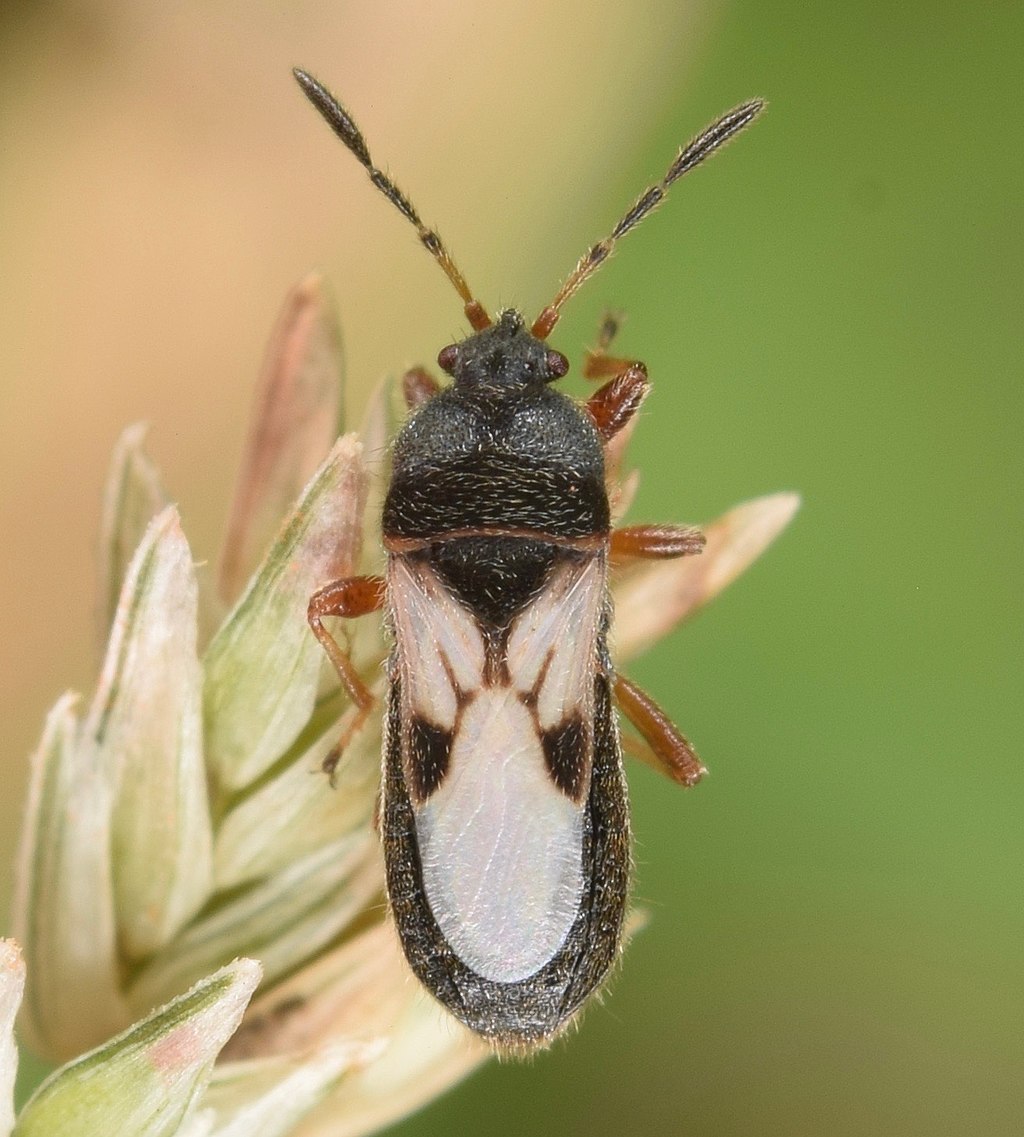
Both nymphs and adults are active and can feed on your lawn. Nymphs can vary from red to orange to brown in color.
Adults overwinter in protected areas like thatch or tall grass. They reemerge in spring to lay their eggs, and in two weeks females lay up to 170 eggs each in leaves or on the ground near the base of your grass blades. One generation per year is common.
In fact, chinch bugs prefer commercial lawns with thick thatch and compaction that grow in full sunlight. These bugs like the cool-season grasses we have here in Northeast Ohio.
How can you tell the difference between chinch bug damage and damage caused by other things like drought so you know whether you need to control insects on the lawn? It’s actually pretty challenging for nonprofessionals to tell. If you look closely, you might be able to see yellow grass in between the brown and green sections. Chinch bugs are so small, you likely won’t see them or tell them apart from other bugs. Your best bet is looking for areas of yellowing and browning grass that spread over a few days. Drought issues won’t spread like this. Also, water stress signs will go away after irrigation, while chinch bug damage will not.
Billbugs in Your Commercial Turf
Billbugs are lawn insects that are pretty small - ¼ of an inch to ⅜ of an inch long. They are dark gray to black in color.
In larvae form, billbugs are white with brown heads, resembling legless white grubs.
Adult billbugs typically hibernate during winter months, becoming more active in late-April to mid-May when soil surface temperatures reach 65 degrees Fahrenheit or more.
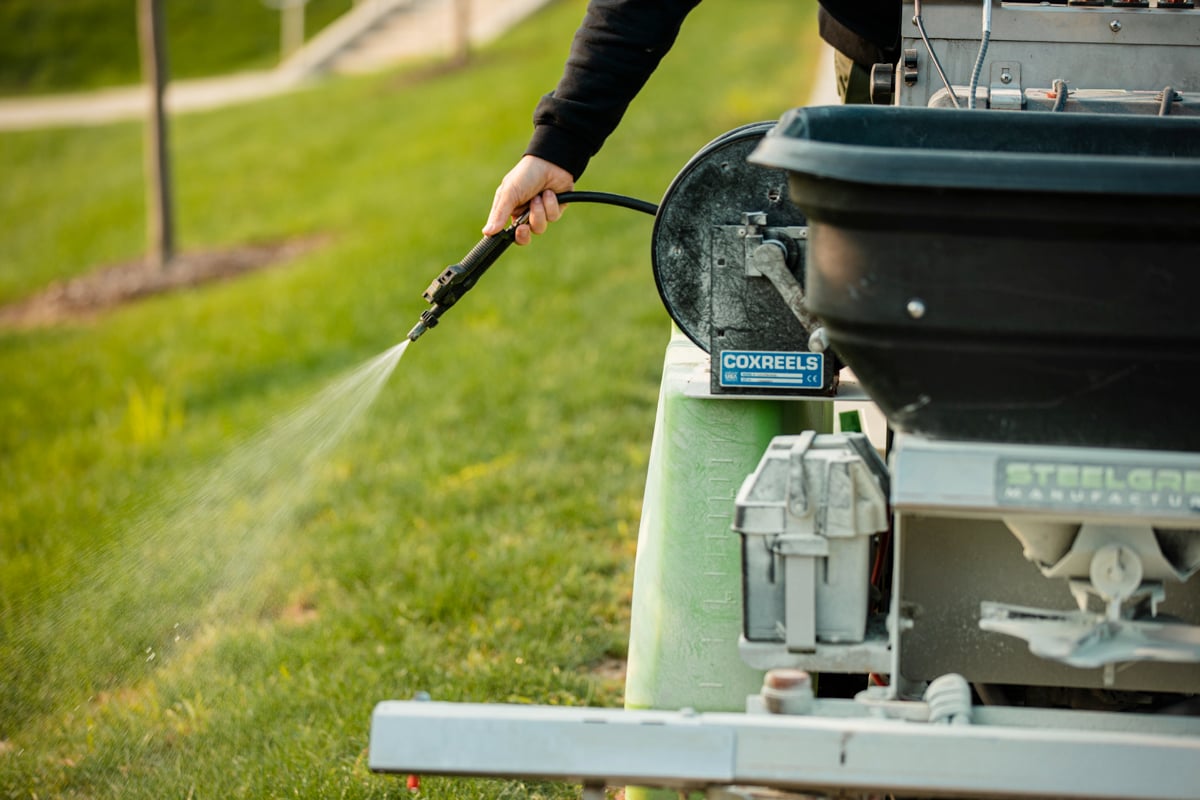
After emerging, billbugs feed on suitable grasses and then the females insert eggs into grass stems. Most eggs are laid by early-July and when the larvae hatch, they tunnel until they get too large. They then feed externally on grass crowns and roots.
After approximately 35 to 55 days, the larvae are full grown and pupate in the soil under the thatch. Reddish-brown adults emerge in late-August through September.
Infestations produce small dead browning spots in the turf. The soil under the damaged turf is solid. But similar to chinch bugs, the big problem with billbug damage is that it looks like a variety of other problems.
To confirm billbug damage in order to confirm the need for lawn insect control, facility managers can grasp the affected turf and pull upward. If the stalks break easily at ground level and the stems are hollowed out or are full of packed sawdust-like material, billbugs are the culprit.
How to Get Rid of Chinch Bugs
For treating your lawn for bugs like chinch bugs, professionally applied insecticidal soap and granular insecticides can handle current infestations. Your landscape professional will treat them when they are actively feeding.
Bringing in a commercial lawn care professional for a surface insect control treatment can significantly reduce wide scale chinch bug damage if you catch it early enough.
Unfortunately, there is no preventive treatment for chinch bugs the way there is for grubs. But you can help prevent chinch bugs by removing the conditions they love – namely thatch.
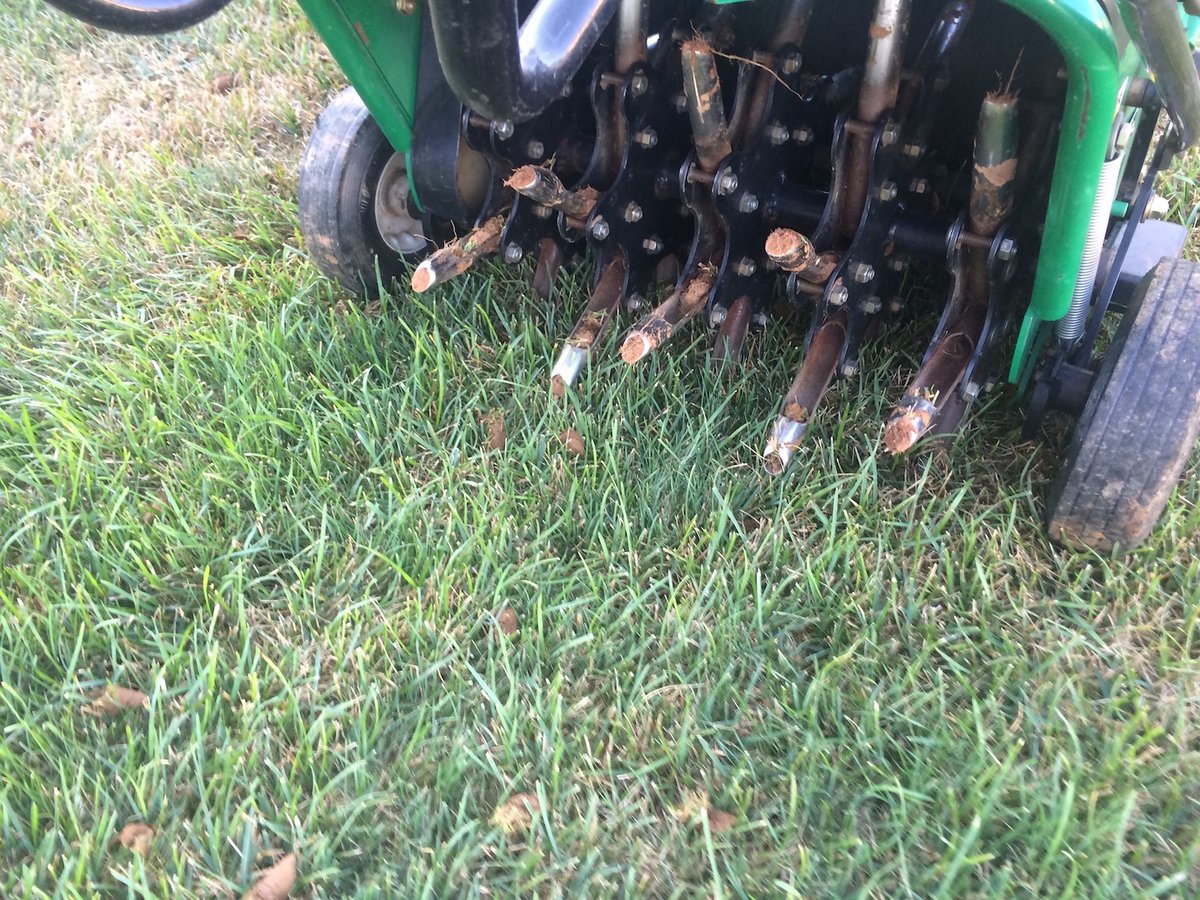
An annual aeration and overseeding can reduce your thatch and compaction, thicken up your commercial lawn, and improve the health of your soil, encouraging healthier grass. Aeration is the process of using an aerator to pull soil plugs from the lawn to encourage airflow and reduce compaction. Overseeding at this time maximizes seed to soil contact to ensure better germination.
Other preventive methods include having a commercial landscape professional take good care of your turf. A stressed lawn is one that can attract trouble like chinch bugs.
- Mow your lawn properly. This means mowing it to a 3- to 4-inch height. In the spring and summer, this happens weekly so they aren’t cutting more than one-third of the grass blades during each mowing. A professional will also sharpen mower blades to ensure a clean cut.
- Proper irrigation. A lack of water or too much water can also stress out your commercial lawn.
- Proper fertilization. A commercial professional will keep your lawn properly fertilized to ensure adequate nutrients and proper pH balance.
While regular commercial lawn care might sound like a simple means of chinch bug control, you’d be surprised how easy it is to keep lawn-damaging pests away with just these basic maintenance tasks.
How to Get Rid of Billbugs
Unfortunately, billbugs are some of the most difficult turfgrass insects to control because the adults' armor-like bodies do not readily absorb insecticides. They also don’t ingest much insecticide when they penetrate a grass stem while feeding.
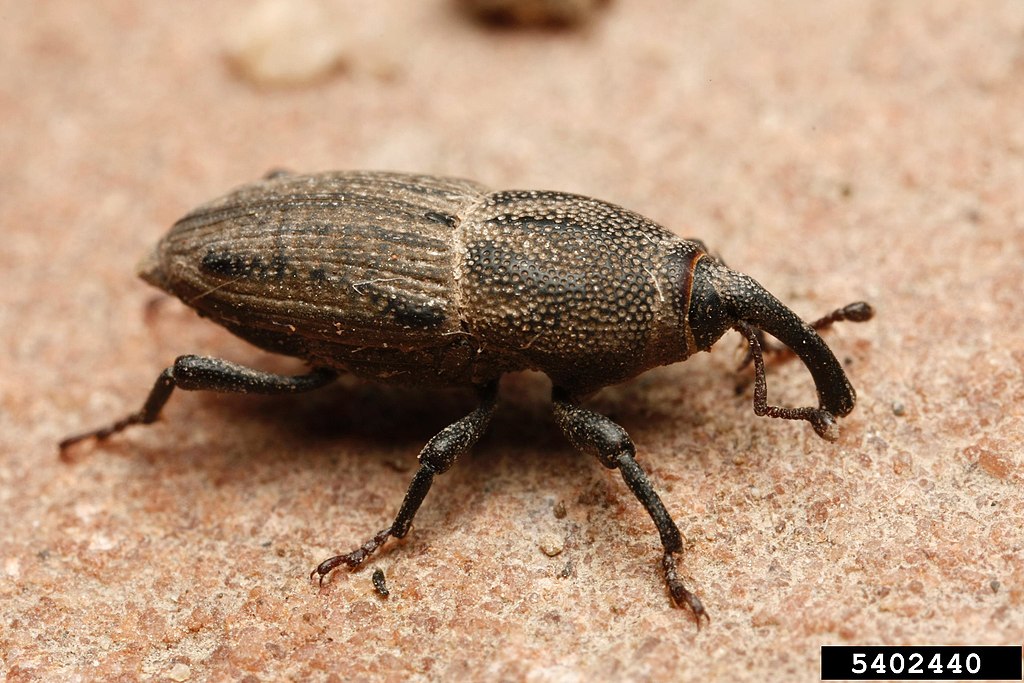
For lawn treatment for bugs like billbugs, you want to aerate annually to remove thatch. This also encourages water and nutrient penetration into the soil.
Your commercial lawn care professional may also apply systemic insecticides because of long residual in turfgrass and use resistant and/or tolerant varieties of bluegrass cultivars as a way of controlling billbug infestations.
Need Help Getting Rid of Chinch Bugs and Billbugs In Your Commercial Lawn? Call Turfscape
In your Northeast Ohio commercial property, the very last thing you want to see are yellowing and brown spots in your facility’s lawn. They ruin your professional, positive appearance.
And you certainly don’t want to find you have an army of tiny insects multiplying and doing the damage so effortlessly and quickly after you’ve spent so much time and money in caring for your commercial site, keeping its curb appeal up.
You have enough on your plate. If you want to eliminate chinch bugs and billbugs with professional and proven lawn insect control, contact a lawn care professional for proper diagnosis and treatment. An effective and swift solution could save you time, money, and – most importantly – your commercial lawn’s appearance, vigor, and health.
Turfscape would love to help. We can create a custom landscape, lawn care, and insect control plan so your commercial lawn looks its best.
Want to learn more about our commercial landscape services? Get started today with a free quote. We’ll review your options together so you can feel confident and make a great choice. 
 Image Source: chinch bug, billibug
Image Source: chinch bug, billibug

